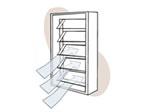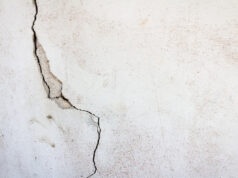
Providing ventilation is an important function of your home windows. How much air flow you can harness will depend on characteristics such as climate, window…
Providing ventilation is an important function of your home windows. How much air flow you can harness will depend on characteristics such as climate, window orientation and the style of window you choose. Undoubtedly, the biggest factors in effective ventilation from windows are careful placement and planning.

Climate
Australia’s vast expanse embraces a range of climate conditions. Northerly parts of the country that experience hot, humid summers spend more time and energy cooling the home than their southern counterparts. These warmer climates can benefit from windows with large opening areas like louvres and casements to capture cooling breezes. In locations that experience hot summers and cold winters, it is important to balance the need for ventilation in summer against potential air leakage resulting in winter heat loss.
Orientation
Ventilation is largely dependent on the orientation and placement of windows. The orientation of your home and its windows should be planned to maximise prevailing winds. Coastal breezes usually come from an onshore direction (southeast, east to northeast in most east coast areas and southwest in most west coast areas, e.g. the Fremantle Doctor). In mountainous or hilly areas, cool breezes often flow down valleys in late evening and early morning as night cooling creates cool air currents.
The Designing for Climate website provides useful information on local weather and wind direction.
The faster air can travel, the cooler it becomes. Obstacles in the path of moving air will cause it to change direction and slow down. To maximise the cooling effect of breezes keep obstructions such as trees, shrubs or fences on the outside to a minimum and consider the internal layout of walls and furniture.
Window style
The effectiveness of windows to achieve good ventilation relies on which windows are opened and how far they are opened. Windows with large opening areas and doors that open fully will increase the passage of breezes. Operable hinged windows such as louvres and casement windows allow ventilation through the full window area while sliding windows such as double hung and horizontal sliders, can only be opened to, at most, half the window area.
The Building Code of Australia sets out minimum ventilation requirements based on a percentage of the total floor area of a room. As a general rule of thumb, ventilation openings should be in excess of 10% of the floor area of a room. Check with your builder or local building authority for these requirements.
Air leakage
Airflow that is not controlled but results from the leakage of air through cracks in the building envelope is called infiltration and exfiltration. In the case of windows, air leakage is most commonly caused by poor installation or maintenance. In some weather conditions, and depending upon the type of window, air leakage can be responsible for as much heat transfer as through the rest of the window. Therefore it is important to check your windows have been correctly installed and regularly maintained.
- Balance the need for ventilation in summer against air leakage and winter heat loss.
Passive design
Using windows to achieve optimal ventilation is just one element in cooling your home. Taking advantage of your natural climate to maintain thermal comfort, a principle known as passive design, means you can reduce your reliance on mechanical heating and air conditioners. More information on passive cooling is available from the government’s Your Home Technical Manual.





